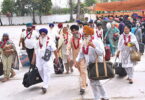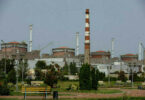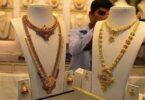Monitoring Desk

Between 1957 and 1966, Robert Blomfield created a substantial archive of life in the Scottish capital. This pursuit ran alongside his medical studies in the city and subsequent years spent as a junior doctor in London. Throughout his medical career, he carried his precious Nikon camera to record whatever caught his eye. Robert Blomfield: Edinburgh 1957-1966 is published by Bluecoat Press (£28)

For many people, his subject matter would go unnoticed, but Blomfield spotted worthwhile images at almost every turn. Edinburgh, with its labyrinth of cobbled streets and alleyways, was full of quirky potential.

Born in Leeds in 1938, Blomfield practised street photography from the late 50s to the early 70s. Apart from close friends and family, few people saw his images. Once his prints were dry, they would be put back into their yellow Kodak boxes and would often not see the light of day for many years.

Armed with a Nikon F and using mainly black and white Kodak Tri-X film, Blomfield became ever more prolific, developing his style as an unobtrusive observer of interesting or amusing moments.

Blomfield’s obsessive desire to document the world around him became the foundation of his photography.

His striking images captured the changing face of Britain’s inner cities. Children playing in the streets held a particular fascination

The striking modern architecture of the emerging Forth Road Bridge attracted his attention, and he took numerous pictures of its construction. He was a keen climber and ascended the catwalk by moonlight one evening

Blomfield was truly an amateur photographer. In 1967, he briefly entertained the idea of pursuing photography as a career after several shots by him were selected for the British Journal of Photography. However, he feared that working to a brief would take away much of the enjoyment, and he stuck with his medical career.

To describe Blomfield as a street photographer is misleading: he would capture anything that struck him wherever he happened to be.

A naturally shy character, Blomfield used the camera as a way of hiding in plain sight. His sense of humour and a disregard for authority allowed him to get close to his subjects.

Children in particular caught his eye as they played, finding joy often in the midst of poverty. Many of his shots evoke a seemingly more innocent and carefree world

The striking modern architecture of the emerging Forth Road Bridge attracted his attention, and he took numerous pictures of its construction. He was a keen climber and ascended the catwalk by moonlight one evening

The street was just one of many sources of inspiration. He said: ‘I didn’t need to set the stage, the stage set itself. All I had to do was take the photo’.

The work he produced in this period brilliantly captured the atmosphere of post-war Edinburgh, a city in transition.

Many dilapidated Victorian buildings were in the process of being demolished under the postwar slum-clearance scheme. Blomfield was drawn to these crumbling streets.

Blomfield had an intimate connection with the people and places he photographed. ‘I think it’s a form of love,’ he said. ‘You should love the picture. I love the photographs. I love the people’.

After sitting for six decades in boxes, Blomfield’s Edinburgh photos were exhibited at the City Art Centre between November 2018 and March 2019

His photographic legacy will inspire generations of photographers for years to come

His style was influenced by several of photography’s greats. Henri Cartier-Bresson’s pioneering images inspired him to see more and be seen less.

Recently his family began to catalogue and digitise thousands of images in the archive and are finally in a position to start sharing his photography with a wider audience
Courtesy: The Guardian






